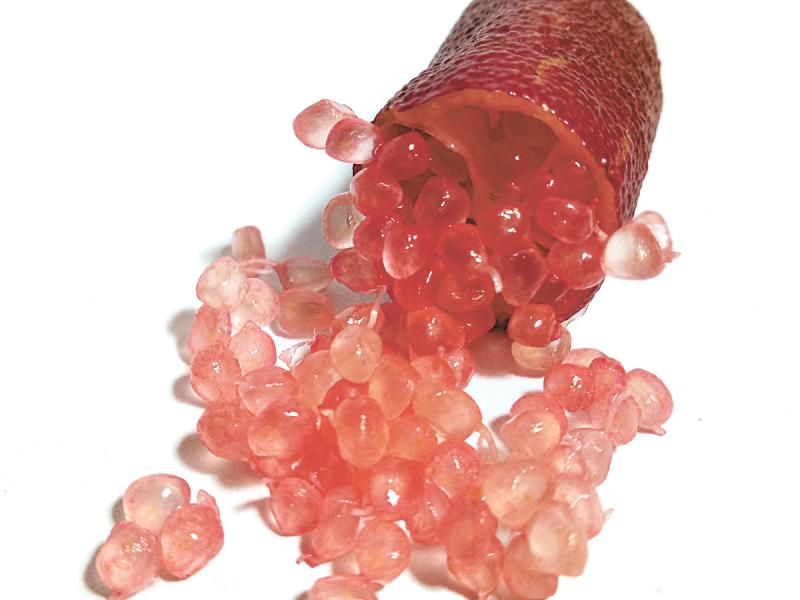If you truly believe, you can create anything. You can even create entire continents. Going back as far as the second century, people spoke of a hypothetical continent located far to the south, a continent called “terra australis incognita.” So when Dutch explorers found the very real southern continent they called it ... not Australia, but “New Holland,” and New Holland it stayed until 1814 when Matthew Flinders thought of a more pronounceable English name, Australia.
From kangaroos to koala bears, Australia is home to unique creatures, and for houseplants it is no exception. The somewhat rare Australian Red Lime will yield striking red two-inch-long fruit. Each fruit has tiny juice vesicles inside that pop when you eat them, releasing a spray of tasty juice. You can add them to fruit salads or cook them into sauces. Australian Red Limes make stunning preserves. Or just use slices as colorful edible garnish.
Because of its spectacular color and small size, it is perfect as an indoor plant. Like all citrus, the glossy green leaves are nice enough in their own right to add year-round greenery. The small white flowers bloom in the spring and have a classic, deeply sweet scent. The Australian Red Lime scent is unlike other citrus, but just as pleasant. If the flowers get pollinated, you will have a crop of ruby red limes in time for Christmas. To be sure your flowers get pollinated and grow into limes, you can use an artist paintbrush to move pollen from one flower to another.
Water the Australian Red Lime deeply until water runs out the bottom of the pot. Let the soil dry out between waterings. Your tree needs regular feedings of fertilizer. Use a citrus-formula fertilizer if available, or else one made for acid-loving plants. Look for a balanced fertilizer such as 10-10-10 or 7-9-5. Apply fertilizer when the tree is actively growing, from spring through September.
Luckily, citrus trees grown indoors are usually free from most pests. You may get whitefly and spider mites that can be treated by simply washing the leaves once in awhile. If the attacks get out of hand, use neem oil.
Keep the tree where it gets full sun, with room temperature above 40 F. With shorter days of winter, slightly warmer temperatures above 60 are best because the warmer temperature helps the tree absorb nutrients.
While humidity of 50 percent or higher is best, these plants get along fine with lower humidity. Prune while the tree is young to encourage branching. A well-branched tree will be bushier and have stronger limbs needed to hold the heavy fruit. Best pruning time is late spring after flowering, while the tree is actively growing.
When your tree has outgrown its pot, move it to a pot just one size up. Clay pots are best because they allow the soil to breathe and drain quickly. Keeping the Australian Red Lime slightly under-potted is actually better for the root system.
Grow your own Australian Red Lime, and you will have a piece of the land down under. Or New Holland; you decide.





















































